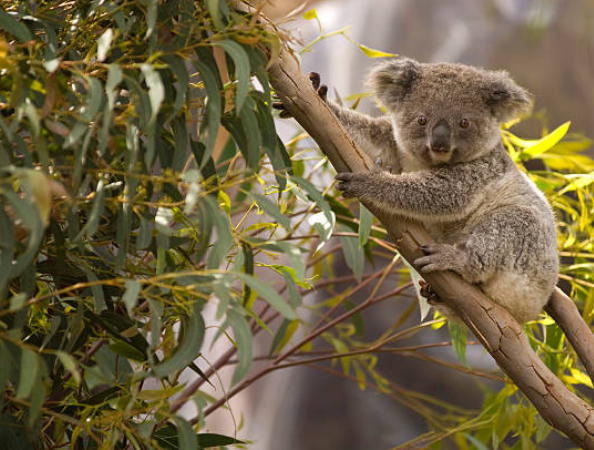Although koalas only spend 1% of their time on the ground, this is linked to an increase in their deaths.

New research reveals that koalas only spend about 10 minutes a day on the ground, but this time on the ground is associated with two-thirds of recorded koala deaths , according to experts from Australia's University of Queensland at the Society for Experimental Biology's SEB 2025 Conference in Antwerp, Belgium.
Koalas are an iconic and nationally endangered species in Australia. However, their populations are rapidly declining due to habitat loss, fragmentation, and disease. Furthermore, very little is known about their small-scale movements, especially when they are on the ground.
"Koalas primarily live in trees, but due to extensive land clearing, they are increasingly forced to move overland, which puts them at serious risk of injury and death," explains Gabriella Sparkes, a PhD student at the University of Queensland, Australia. "I wanted to better understand what koalas do during these overland movements."
Previous research has shown that around 66% of koala deaths occur while they are on the ground, primarily due to dog attacks and vehicle strikes. However, surprisingly little is known about their behavior on the ground. "We still don't clearly understand how frequently koalas move down from trees, how far or how fast they move, how long they stay on the ground, or what influences those decisions," says Sparkes. "These knowledge gaps are crucial if we are to identify high-risk areas or times and develop strategies to reduce threats during these vulnerable times."
To analyze koala movement, Sparkes and his team fitted wild koalas with GPS loggers and six-axis accelerometers in a landscape largely cleared for agriculture. Their locations were recorded every five minutes, with intervals increasing to five seconds during terrestrial movement.
The accelerometers were able to identify different types of movement, such as walking, climbing, and sitting, which helped them classify both arboreal and terrestrial behavior patterns on a large scale . "When combined with GPS tracks, we get an incredibly detailed view of how koalas move around their habitat," Sparkes says.

Koalas spend most of their time in trees, sleeping and feeding. Photo: iStock
This research has revealed that, as expected, koalas spend most of their time in trees, sleeping and feeding, but the true extent of their tree-hugging was shocking. "What surprised us was how little and briefly they use the ground: only two or three times a night, averaging about 10 minutes in total, or less than 1% of their day," Sparkes highlights.
They also found that koalas on the ground moved with very little urgency. "They spent almost as much time sitting and pausing as they did walking, and only spent about 7% of their time on the ground hopping," Sparkes explains. "This could indicate that koalas carefully assess their surroundings as they move, possibly evaluating trees before choosing one to climb, or it could reflect the energy expenditure involved in hopping."
This study is the first to document these small-scale terrestrial movements in wild koalas and raises new questions about how they navigate in increasingly fragmented habitats . "We are now analyzing the environmental characteristics that influence how long koalas remain in trees," the researchers conclude. "If we can identify the tree types or habitat conditions that encourage them to remain in trees longer, we could design or manage landscapes that reduce the need for terrestrial movements."
Based on these findings, the researchers hope to influence the direction of koala conservation efforts, which could include prioritizing certain vegetation types, improving canopy connectivity, or reducing gaps between safe trees, all of which could help keep koalas off the ground and out of danger.
eltiempo





